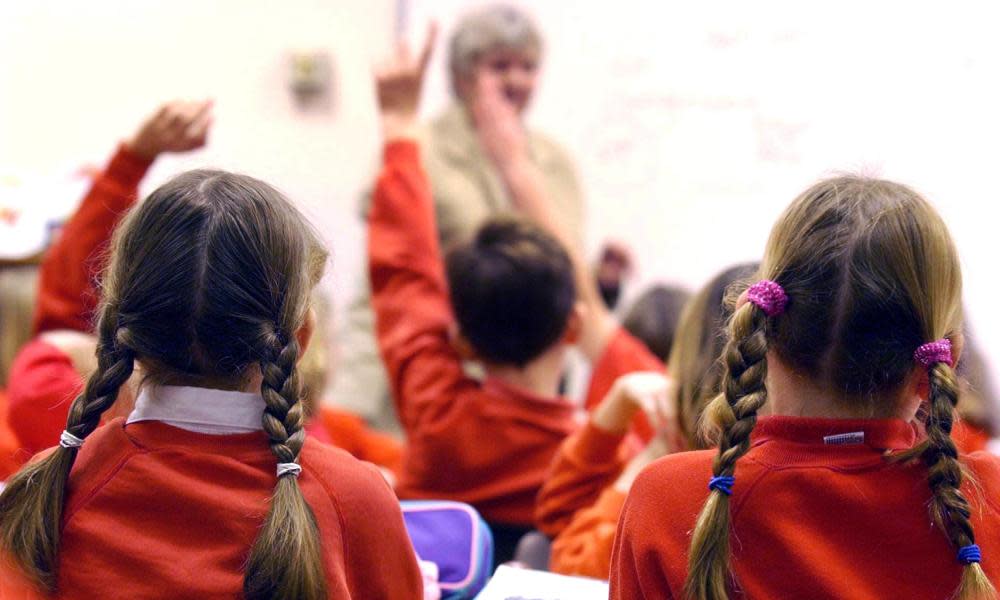Sats test gap shows disadvantaged pupils catching up with better-off peers

Children from disadvantaged families in England are slowly closing the gap with their better-off peers in primary school attainment, although children from better-off backgrounds are more likely to get top results, according to new figures.
A detailed breakdown of results from key stage two national tests – known as Sats – taken in the final year of primary school show that 51% of children eligible for free school meals met the government’s expected standards in reading, writing and maths, compared with 70% of other pupils, a slightly narrower gap than in previous years.
Analysis by the BBC using the data suggests it will take 50 years for disadvantaged pupils to catch up with their better-off peers, while the figures from the Department for Education also revealed that the gap among higher-attaining pupils was widening.
While the proportion of disadvantaged children reaching a higher standard in reading, writing and maths has doubled since 2016, the rate has only increased from 2% to 4%. But for other children the proportion increased from 7% to 12% this year.
A breakdown of results by date of birth showed a clear pattern of a falling pass rate for each month’s change. Some 71% of children born in September – the eldest in their year group – meet the expected standards. By February the rate was 65% and for the August-born the rate had slipped to 58%.
The 11-year-olds who took the tests last spring were the first cohort to have gone through primary school since the national use of synthetic phonics to teach reading was adopted by the government. The first results showed that nearly 90% of those who passed the phonics check taken in year one reached or exceeded the expected standard in reading.
The new data also confirmed the DfE’s preliminary figures, which showed that 64% of pupils met the expected standards in reading, writing and maths, including 68% of girls and 61% of boys.
Nick Gibb, the schools standards minister, said the figures showed that standards in primary schools were rising. “Headteachers are using the freedoms afforded by academy and free school status to make this a reality, as illustrated by the progress disadvantaged pupils in multi-academy trusts are making in writing and maths,” Gibb said.
However the breakdown of results by school type showed that pupils in maintained primary schools outperformed those in sponsored academies and free schools. Only 61% of pupils in free schools reached the expected standard, compared with 66% in maintained schools.
Meanwhile, figures for last summer’s exam season released by Ofqual, the examinations regulator in England, showed another steep rise in the number of entrants caught with smartphones.
The number of students found with mobile phones while taking their GCSE and A-level exams rose from 1,060 last year to 1,295 in 2018. But elsewhere there were steep falls in cases of plagiarism, and fewer cases of staff or school-level maladministration.

 Yahoo News
Yahoo News 
